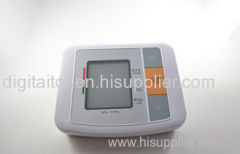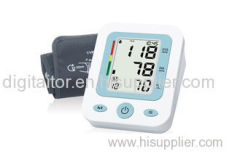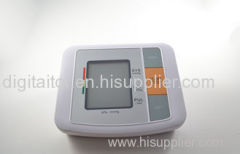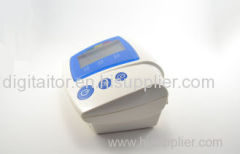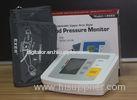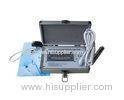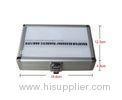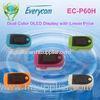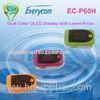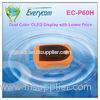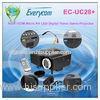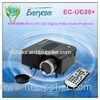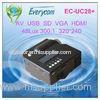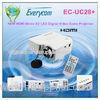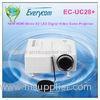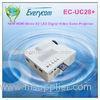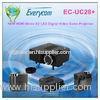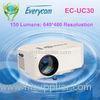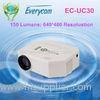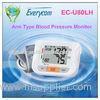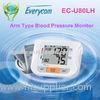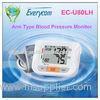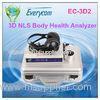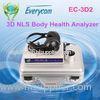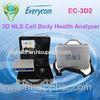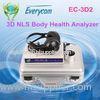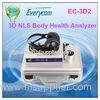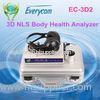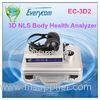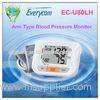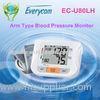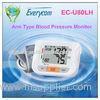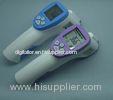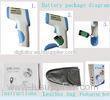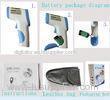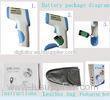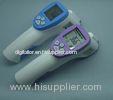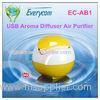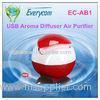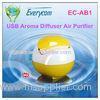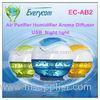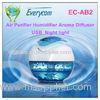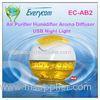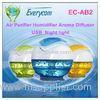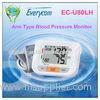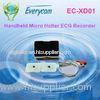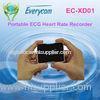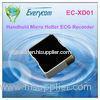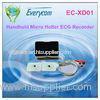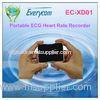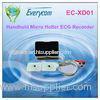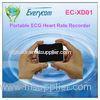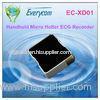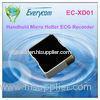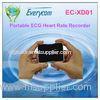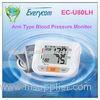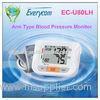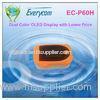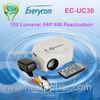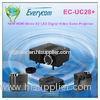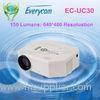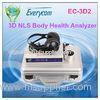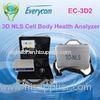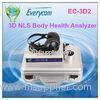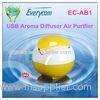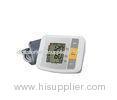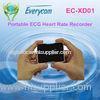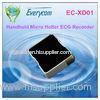|
Shenzhen Everycom Technology Company Limited
|
Gold Index: 10002
Pocket Pediatric Finger Pulse Oximeter
| Place of Origin: | Guangdong, China (Mainland) |
|
|
|
| Add to My Favorites | |
| HiSupplier Escrow |
Product Detail
Yellow Home Pocket Finger Pulse Oximeter Pediatric For Oxygen Saturation Monitor
&nb
Yellow Home Pocket Finger Pulse Oximeter Pediatric For Oxygen Saturation Monitor
Section1
- Instructions for the Safe Operation and Use of the Fingertip Pulse Oximeter
· Do not attempt to service the Fingertip Pulse Oximeter. Only qualified service personnel should attempt any needed internal servicing.
· Do not use the pulse oximeter in situations where alarms are required. The device has no alarms.
· Prolonged use or the patient’s condition may require changing the sensor site periodically. Change sensor site and check skin integrity, circulatory status and correct alignment at least every 2 hours.
· SpO2 measurements may be adversely affected in the presence of high ambient light. Shield the sensor area (with a surgical towel, or direct sunlight, for example) if necessary.
· The following reason will cause interference and defibrillators.
· High-frequency electrosurgical.
· Placement of a sensor on an extremity with a blood pressure cuff arterial catheter, or intravascular line.
· The patient has hypotension severe vasoconstriction severe anemia or hypothermia.
· The patient is in cardiac arrest or is in shock.
· Fingernail polish or false fingernails may cause inaccurate SpO2 readings.
1.2 Warnings
WARNING: EXPLOSION HAZARD—Do not use the Oximeter in a flammable atmosphere where concentrations of flammable anesthetics or other material may occur.
WARNING: Do not throw batteries in fire as this may causes them to explode.
WARNING: Do not attempt to recharge normal dry-cell batteries, they may leak, And may cause a fire or even explode.
WARNING: Do not use the pulse oximeter in an MRI or CT environment.
CAUTION: Keep the operating environment free of dust, vibrations, corrosive, or flammable materials, and extremes of temperature and humidity.
CAUTION: Do not operate the unit if it is damp or wet because of condensation or spills. Avoid using the equipment immediately after moving it from a cold environment to a warm, humid location.
CAUTION: Never use sharp or pointed objects to operate the front-panel switches.
CAUTION: The battery must be taken out from the battery compartment if the device will not be used for a long time.
CAUTION: The device shall only be used if the battery cover is closed.
CAUTION: The battery must be proper disposed according to local regulation after their use.
3 Definitions and Symbols
| Symbol | Description | |
| Warning | The information you should know to protect patients and medical staff from possible injury | |
| Caution | The information you should know to protect the equipment from possible damage | |
| Note | The important information you should know | |
Section 2
Introduction
2.1 General
This chapter provides a general description of the Fingertip Pulse Oximeter including:
· Brief device description
· Product features
2.2 Brief Device Description
The pulse oximeter, based on all digital technology, is intended for noninvasive spot-check measurement of functional oxygen saturation of arterial hemoglobin (SpO2). Advanced DSP algorithm can reduce the influence motion artifact and improve measurement accuracy of low perfusion.
The Oximeter can be used to measure human Hemoglobin Saturation and heart rate through finger, The product is suitable for use in family, hospital (including clinical use in internist/surgery, Anesthesia, pediatrics, intensive care and etc.) Oxygen Bar, social medical organizations, physical care in sports and etc.
2.3 Product Features
· Lightweight for carrying and Easy-To-Use.
· Manually adjust the direction of interface.
· Color OLED display, simultaneous display for testing value and plethysmogram.
Low Perfusion down to 0.3%.
· Visual alarm function. Real-time spot-checks.
· Low Battery voltage indicator.
· Automatically switch off.
· Standard two AAA 1.5V Alkaline Battery support more than 20 hours continuous work.
Section 3
Operation
3.1 Operation
3.1.1 Install battery
Installing two AAA batteries into battery cassette in correct polarities and cover it.
| WARING: Do not attempt to recharge normal alkaline batteries, they may leak and may cause a fire or even explode. |
3.1.2 Turn the Pulse Oximeter on/off
Put one of fingers into rubber hole of the Oximeter (it is best to put the finger thoroughly) with nail surface upward, then releasing the clamp.
Press power button to turn the Pulse Oximeter on. The oximeter will automatically be powered off when no finger in the device for longer than 16 seconds.
3.1.3 Read correspondent data from display screen.
Section 4
Cleaning and Disinfection
4.1 Cleaning
Switch off the power and take out the batteries before cleaning. Keep the exterior surface of the device clean and free of dust and dirt. Cleaning exterior surface (OLED display screen included ) of the unit with a dry and soft cloth. Use 75% density of medical alcohol to clean the surface and use dry fabric with little alcohol to avoid alcohol permeates into the device.
| CAUTION: Don’t use strong solvent. For example, acetone. |
| CAUTION: Never use an abrasive such as steel wool or metal polish. |
| CAUTION: Do not allow any liquid into the product, and do not immerse any parts of the device into any liquids. |
| CAUTION: Avoid pouring liquids on the device while cleaning. |
| CAUTION: Don’t remain any cleaning solution on the surface of the device. |
Section 5
Troubleshooting and Maintenance
5.1 Maintenance
· Replace the batteries timely when battery indication is low. Clean surface of the Pulse Oximeter before it is used in diagnosis for patients.
· Remove the batteries inside the battery cassette if the Oximeter will not be operated for a long time.
· It is better to preserve the product in a place where ambient temperature is -10-40 and humidity is 10%-80%.
· Regular inspection to make sure that no obvious damage existed to affect the safety and performance of device.
· No flammable substance, overtop or lower temperature and humidity existed in operation conditions.
5.2 Troubleshooting
Table 5.2.1 troubleshooting
| Problems | Possible Reason | Resolutions |
|
Oxyhemoglobin or heart rate can not be shown normally |
1.Finger is not plugged correctly. 2.Patient’s perfusion is too low to be measured. |
1.Rety by plugging the finger 2.Try some more times, If you can make sure about no problem existing in the product, Please go to a hospital timely for exact diagnosis |
|
Oxihemoglobin of heart rate is shown unstably Related Search
Finger Pulse Oximeter
Pulse Oximeter
Finger Oximeter
Finger Pulse
Fingertip Pulse Oximeter
Handheld Pulse Oximeter
More>>
Find more related products in following catalogs on Hisupplier.com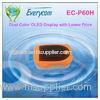
Company InfoShenzhen Everycom Technology Company Limited [China (Mainland)]
Business Type:Manufacturer You May Like:
Printable Page
Bookmark this page
Sitemap XML About HiSupplier Help Center Customer Service Friend Links Site Map Archives Browse by: China Suppliers - Hot Products - Products Directory - Offers Directory - Suppliers Directory - Buyers Directory Language Option: العربية - Nederlands- Français- Deutsch- Italiano- 日本語- 한국의- Português- Pусский- Español Copyright © HiSupplier.com Online Inc. All Rights Reserved.
|





